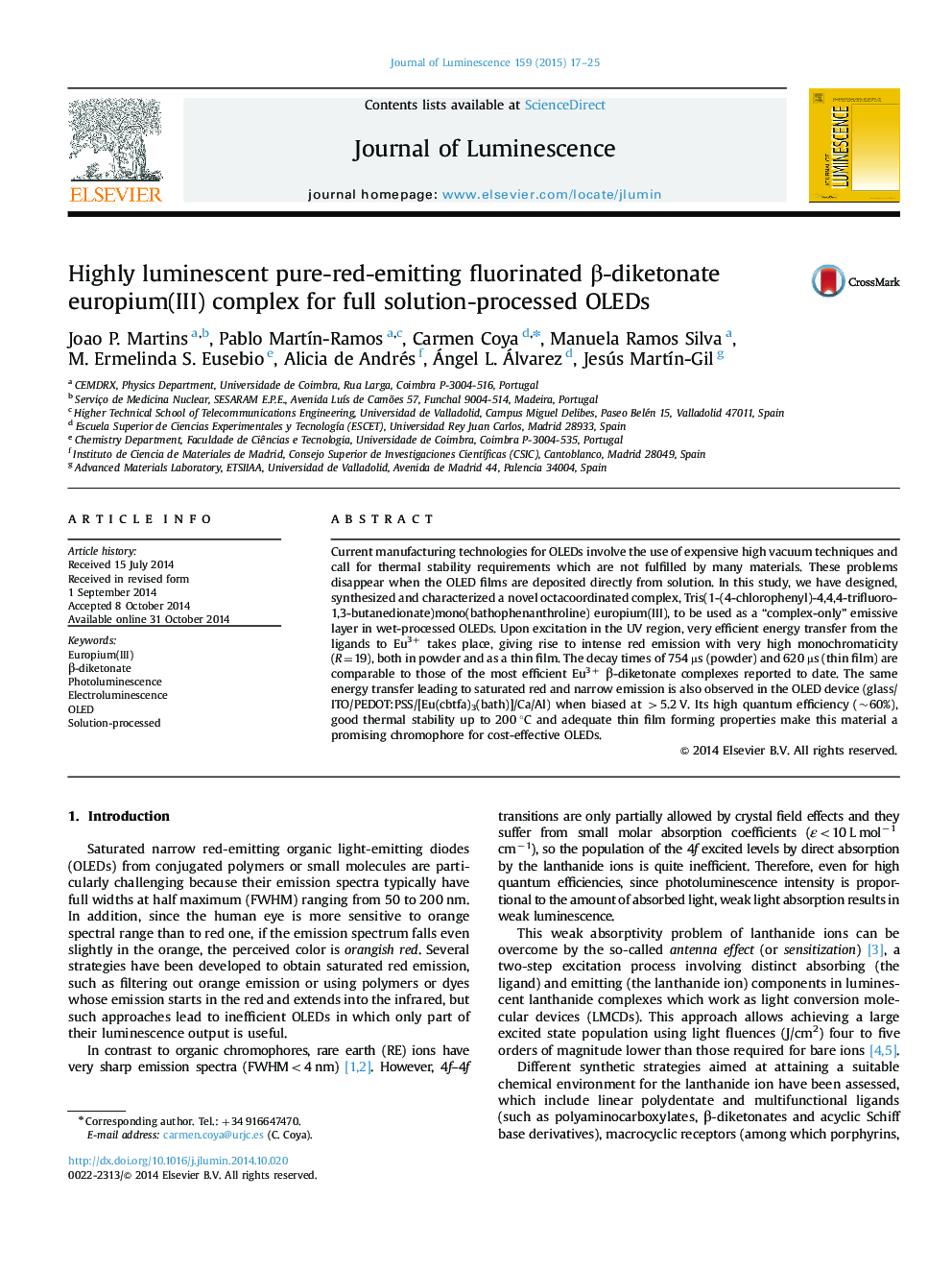| Article ID | Journal | Published Year | Pages | File Type |
|---|---|---|---|---|
| 5399602 | Journal of Luminescence | 2015 | 9 Pages |
Abstract
Current manufacturing technologies for OLEDs involve the use of expensive high vacuum techniques and call for thermal stability requirements which are not fulfilled by many materials. These problems disappear when the OLED films are deposited directly from solution. In this study, we have designed, synthesized and characterized a novel octacoordinated complex, Tris(1-(4-chlorophenyl)-4,4,4-trifluoro-1,3-butanedionate)mono(bathophenanthroline) europium(III), to be used as a “complex-only” emissive layer in wet-processed OLEDs. Upon excitation in the UV region, very efficient energy transfer from the ligands to Eu3+ takes place, giving rise to intense red emission with very high monochromaticity (R=19), both in powder and as a thin film. The decay times of 754 µs (powder) and 620 µs (thin film) are comparable to those of the most efficient Eu3+ β-diketonate complexes reported to date. The same energy transfer leading to saturated red and narrow emission is also observed in the OLED device (glass/ITO/PEDOT:PSS/[Eu(cbtfa)3(bath)]/Ca/Al) when biased at >5.2 V. Its high quantum efficiency (~60%), good thermal stability up to 200 °C and adequate thin film forming properties make this material a promising chromophore for cost-effective OLEDs.
Related Topics
Physical Sciences and Engineering
Chemistry
Physical and Theoretical Chemistry
Authors
Joao P. Martins, Pablo MartÃn-Ramos, Carmen Coya, Manuela Ramos Silva, M. Ermelinda S. Eusebio, Alicia de Andrés, Ángel L. Álvarez, Jesús MartÃn-Gil,
